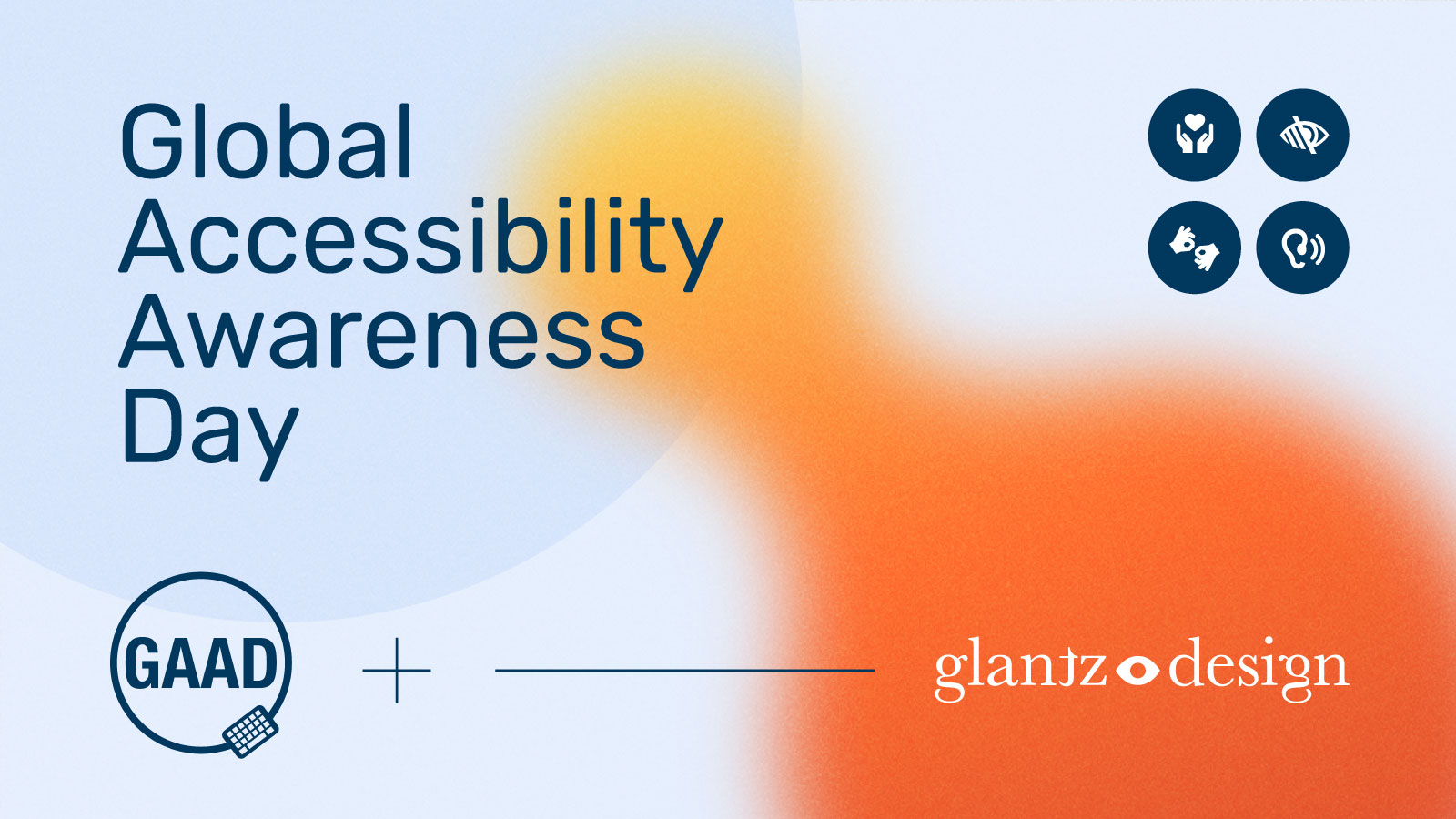Affirming our Dedication to Digital Accessibility
WANT TO SEE MORE LIKE THIS?
Sign up to receive an alert for our latest articles on design and stuff that makes you go "Hmmm?"
Today, Glantz Design is proud to take part in Global Accessibility Awareness Day, an international campaign to promote conversation and education about digital accessibility and inclusion.
One in four Americans—and 1 billion people worldwide—has a disability. Website accessibility ensures all functionality and content is usable for this vast population.
But for too long, websites were left out of disability inclusion efforts. This was misguided. We live in an increasingly digital world, and everyone should have the same opportunities to take part in it. Accessibility is a civil rights issue. Businesses that do not treat digital inequities as such are vulnerable to, at best, lost revenue and, at worst, serious litigation.
At Glantz, we pride ourselves on person-centered, strategic design solutions. Our approach recognizes the needs of website visitors and businesses alike. Making websites accessible supports both.
Our Web Accessibility Journey
Over the past year, we’ve made a concerted effort to better understand how people with disabilities experience the websites we make. The entire studio got involved, including account and project managers, designers, developers, copy writers and leadership. Our education covered a range visual, hearing, cognitive, and physical abilities. We talked to people with disabilities, participated in empathy-building exercises, and conducted technical research.
We learned that accessibility is not a checkbox. Making inclusive websites is a dynamic process that responds to the needs of people who use them. It requires empathy, attention, and commitment.
Our Commitment to Digital Accessibility
Glantz Design believes accessibility is an essential civil rights issue. We have a social responsibility to ensure the functionality and content on the websites we build is accessible to people with disabilities. We also have an ethical responsibility to create products that do not expose our clients to vulnerabilities.
Our digital accessibility efforts are ongoing. We will guide our clients to adhere to the Web Content Accessibility Guidelines (WCAG) version 2.1, level AA criteria. These guidelines help make websites inclusive and accessible for people with sensory, motor, and cognitive disabilities.
What comes next?
We are continually learning, and we invite you to join us on our journey. We will regularly share the digital accessibility insights, tips and resources we gather along the way.
In the meantime, we hope you’ll join us in participating in Global Accessibility Awareness Day. Here are a few ways to get involved:
- Watch a video to learn how people with disabilities experience the web.
- Email your company’s leadership to make a business case for digital accessibility.
- Spread awareness in your network with the hashtag #GAAD on social media.
We promise to live our commitment to accessibility not just today, but every day.


